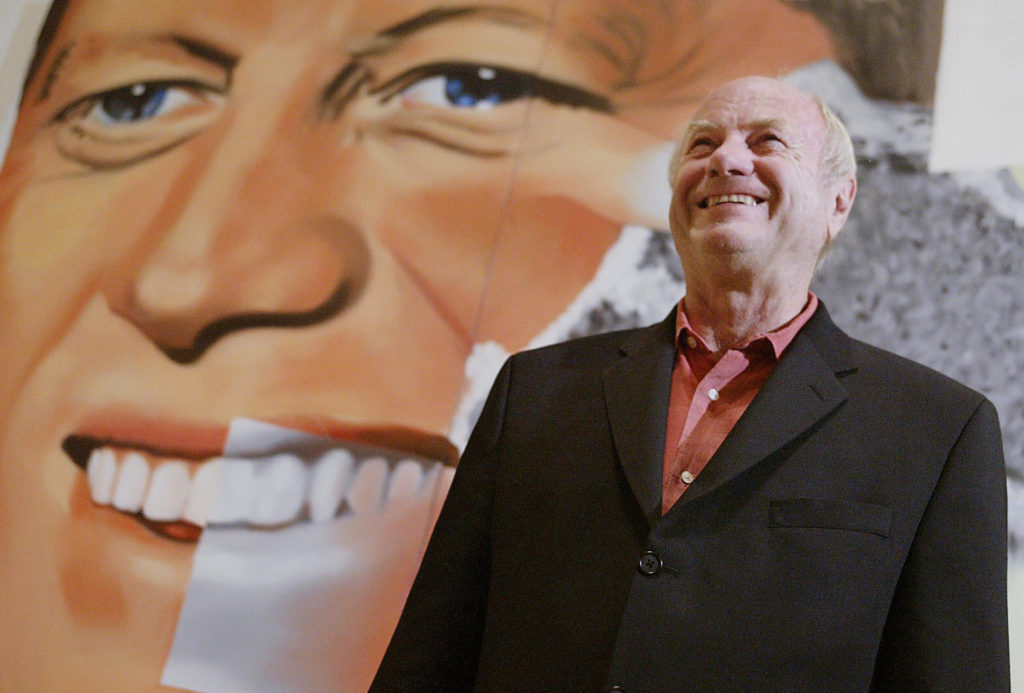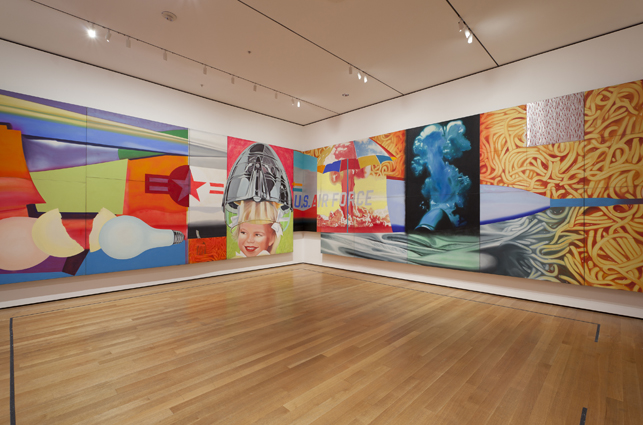Art World
James Rosenquist, American Icon Whose Pop Paintings Were a Sign of the Times, Has Died at 83
A former billboard painter, he was known for his jazzy evocations of life in the USA writ exuberantly large.

A former billboard painter, he was known for his jazzy evocations of life in the USA writ exuberantly large.

James Rosenquist, a titan of postwar American art whose roots as a commercial billboard painter allowed him to paint vivacious Pop amalgamations at an often dizzying scale, has passed away at age 83.
Born in Grand Forks, North Dakota, in 1933, Rosenquist arrived in New York in 1955 and was quickly swept up in the artistic ferment of the time, when the giants of Abstract Expressionism were drawing the eyes of the art-conscious world to that city. After attending the Art Students League, Rosenquist found work painting advertisement signs—sometimes atop teetering scaffolds in Times Square. As the tide of fine-art painting began to flow away from the grand gestures of AbEx to the more vernacular concerns of Pop, he devised a way of applying the advertising aesthetic of his day job to the canvas. The paintings that resulted—visual cocktails of politicians and pinups, candy and lipstick, weapons of war and plates of spaghetti—were exuberantly rambunctious, as brassy as a Count Basie concert and as enveloping as a drive-in double feature.
Arguably the most famous of his paintings, F-111, is an 86-foot-long American phantasmagoria featuring the title bomber jet, a mushroom cloud, a beach umbrella, a smiling young blond girl in a beautician’s hair dryer, light bulbs, cake, and car tires. Spread across 23 florescent-paint-festooned panels, it debuted at Leo Castelli Gallery in 1965—at the height of the Vietnam War—and created a sensation in the New York art scene.

James Rosenquist’s F-111 (1965) at MoMA
Soon thereafter it was purchased for a reported $60,000 by the taxi-magnate collectors Robert and Edith Scull. Later, in the legendary 1986 Scull sale at Sotheby’s, the painting sold for $2.1 million, a then-world-record sum that was nearly 100 times the amount Rosenquist received for the work. (He said he got $22,500.) Today F-111 resides in the permanent collection of the Museum of Modern Art.
Asked about his thinking behind that painting, Rosenquist—whose father was an airplane mechanic—once explained that “a multiplicity of ideas caused its existence,” but that he was fundamentally driven by a desire to create a visual machine of the kind of power that would outlast its immediate moment. “At the time, I really could see people doing—starting to do videos, happenings, and all sorts of things,” he said. “And so I thought—I started thinking about my paintings as tombs, le tombe, tombs. Therefore, if you stumbled upon one of my tombs, it would still work.”
A witty and un-self-serious painter who liked to introduce himself at parties as James Rosenquizzle, Rosenquist wrote a well-received autobiography in 2009 (with the author David Dalton) called Painting Below Zero: Notes on a Life in Art that recalled his “double life” in the 1950s, painting billboards and designing window displays for “Bonwit Teller, Tiffany, and Bloomingdale’s” by day while making his art at night and throwing back drinks at the Cedar Tavern with the likes of Willem de Kooning. With dozens of exhibitions to his name, Rosenquist created a trove of Pop masterworks that have ended up in museums like Tate Modern, LACMA, and the Metropolitan Museum of Art.
Nick Acquavella, whose Acquavella Galleries long represented the painter until his move to Galerie Thaddaeus Ropac a year ago, said that Rosenquist passed away in New York in the presence of his family after a long illness. “You could not have known a nicer man,” said Acquavella. “He was a pillar of postwar American art. He was always fun to be around, and all the years that our gallery worked with Jim were a true pleasure. He will be sorely missed.”